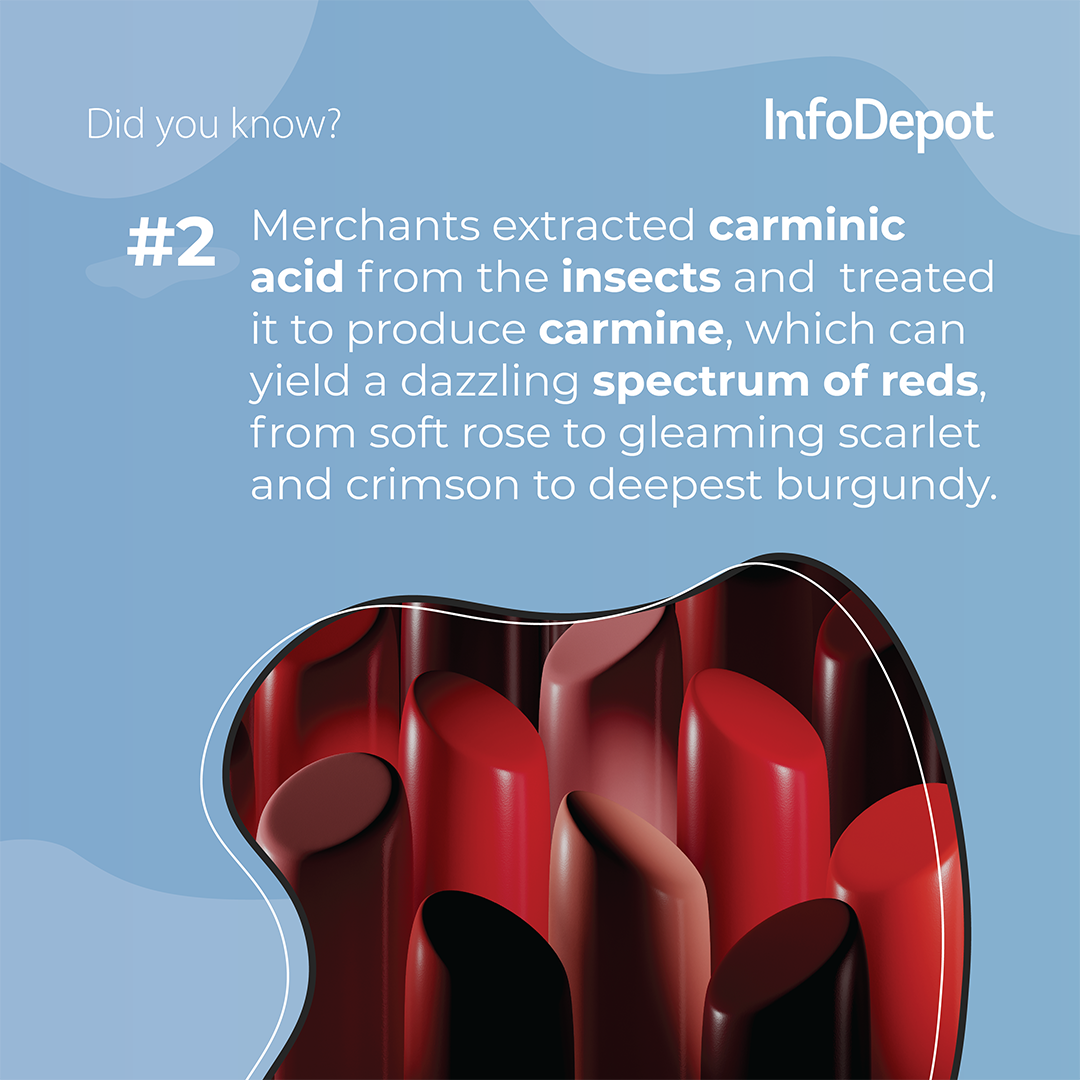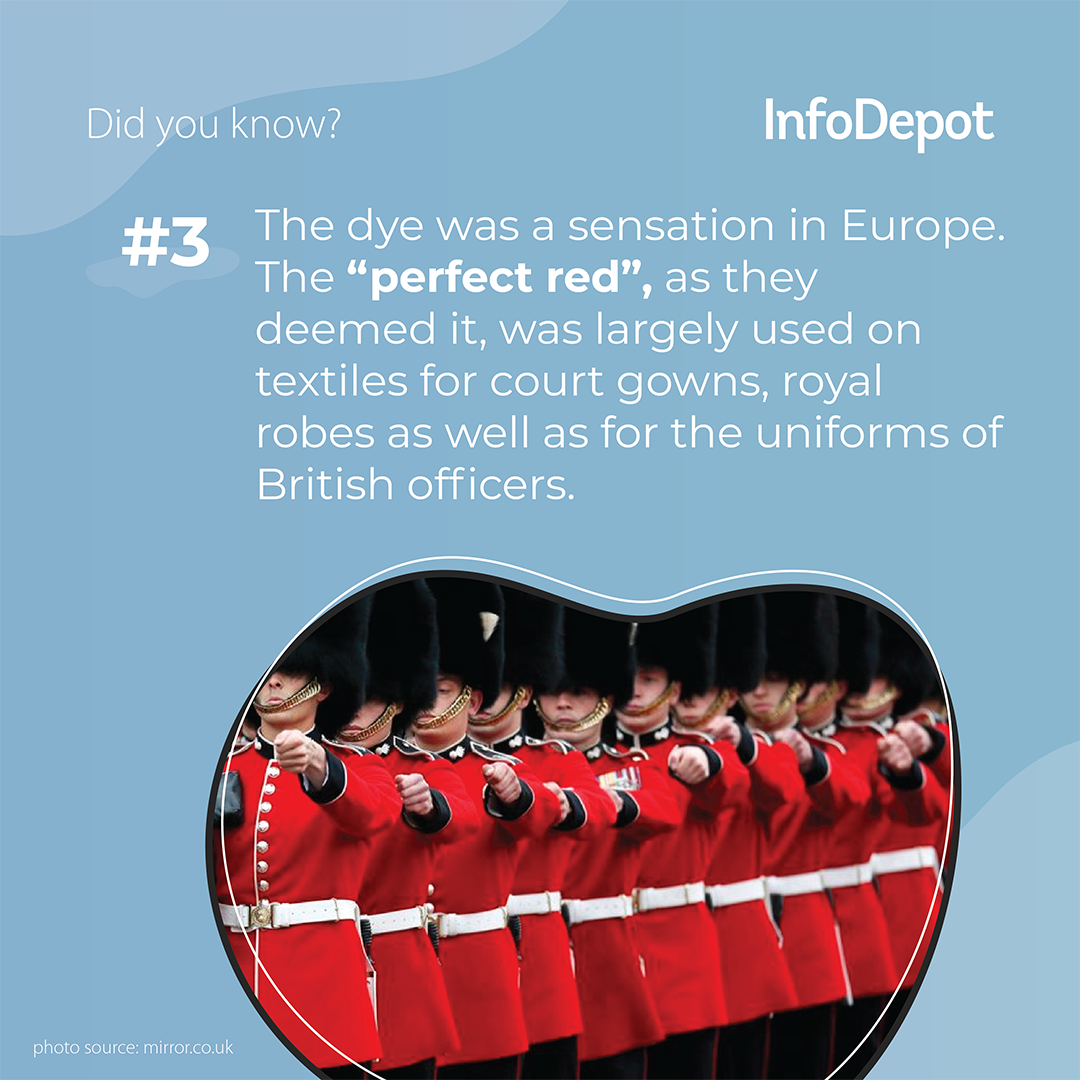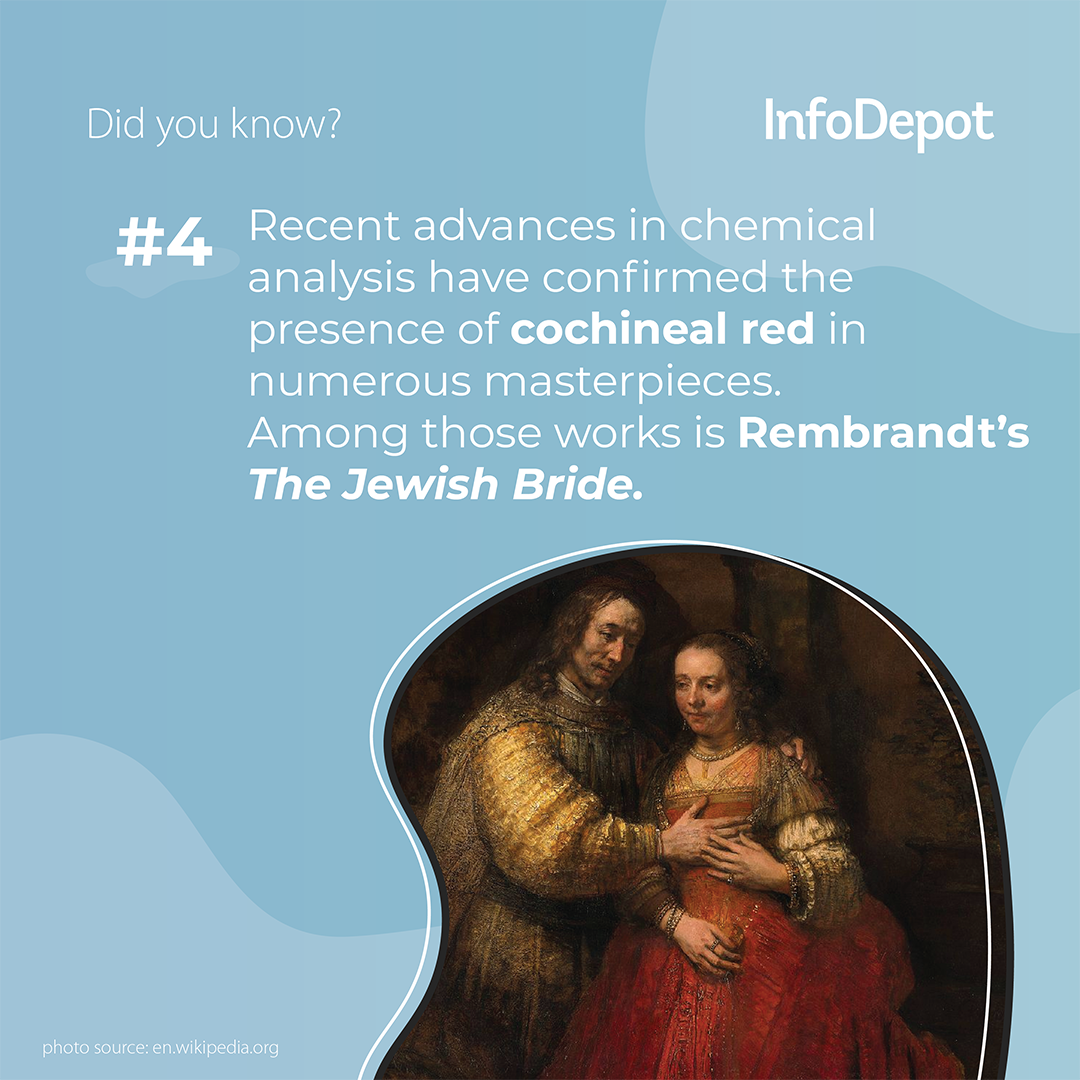The short answer is that insects known as cochineals were used to provide us with the color red and this color soon became a symbol of power. Do you want to find out more about how cochineals worked their way into the dye which colored royal gowns?
A cochineal is an oval-shaped insect that can be found on the sub-border of Sternorrhyncha. It lives on various cacti, feeding on plant moisture and nutrients. Cochineals are soft-bodied insects that are generally immobile as they spend most of their day eating. Something like humans on a Saturday after a difficult week at work.
Cochineals produce carminic acid by way of fending off predators. That acid we can extract and use to create a natural dye known as carmine. The acid contributes between 19-22% to the body of the insect.

How do we collect cochineals?
Collecting cochineals is not a difficult task. They can simply be brushed off cacti and collected for processing. The extraction process includes several techniques, from exposing the insects to oven heat, sunlight or steam as well as immersing them in hot water. Each of these methods can produce a different shade of red or cochineal red if you will. Once dried or pulverized, the insects are boiled in an ammonia or sodium carbonate solution to extract carmine.
A whopping 80,000 to 100,000 insects are required to make just 1 kilogram of cochineal dye.
Cochineal was derived from the Latin ‘Coccinus’ meaning ‘scarlet-colored’ or ‘Coccum’ meaning ‘berry yielding scarlet dye’. Its use can be traced back to the 2nd century BC, used by the Aztecs and the Maya people. In the past few centuries, it has been used primarily to dye fabric, especially those of kings, nobles, the wealthy, and the clergy. This led it to be associated with status and power.
It was also used to dye rugs, tapestries and even appeared in paintings. The dye is more suited to protein based fabrics such as silk, rather than plant-based material such as cotton or wool; however it was still used on both types of material.

Interestingly, cochineal dye was also used in histology as a staining technique during scientific analysis of tissues and carbohydrates. Who knew a dye could be so useful?
What is cochineal dye used for?
Famous artistic masterpieces have been found to contain the cochineal color red. However, it may be more prominent in today’s society than you think.
Cochineal dye is used to color lipsticks and even appears when you are baking cupcakes in the form of red food coloring.
It was quickly replaced in artistic fields with synthetic dye, as cochineal has proven to fade in sunlight and diminish the appearance of the artwork.

Multinational corporations such as Starbucks have also ceased to use the dye. It has been shown to trigger allergic reactions and even respiratory problems. The colorant is also not suitable for vegans or vegetarians.
If you have ever thought about how red dye was made, I bet you didn’t think it was created from insects found in the sub-border of Sternorrhyncha!
One small 5mm insect has contributed to the colour of lipsticks, our icing, scientific testing and even the colour of the clothes that we wear. The dye that it produces has also become a sign of status due to the fact that it is often worn by the powerful.
Some also claim that the color red has magical properties in that it protects the individual who wears it.
Learn something new every day with InfoDepot! Try out some of our video classes. Maybe you can make your very own magical pair of cochineal red earrings…





Comments